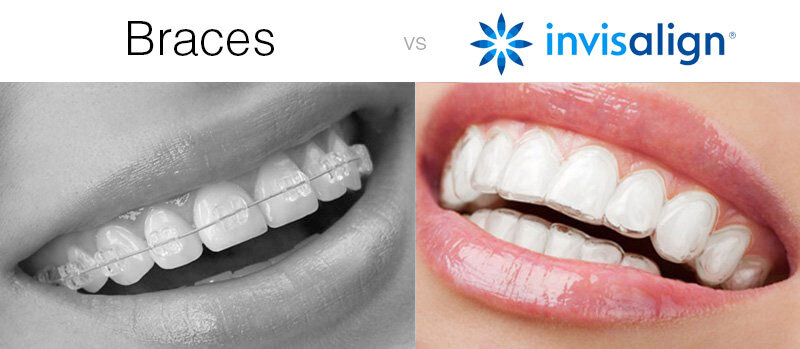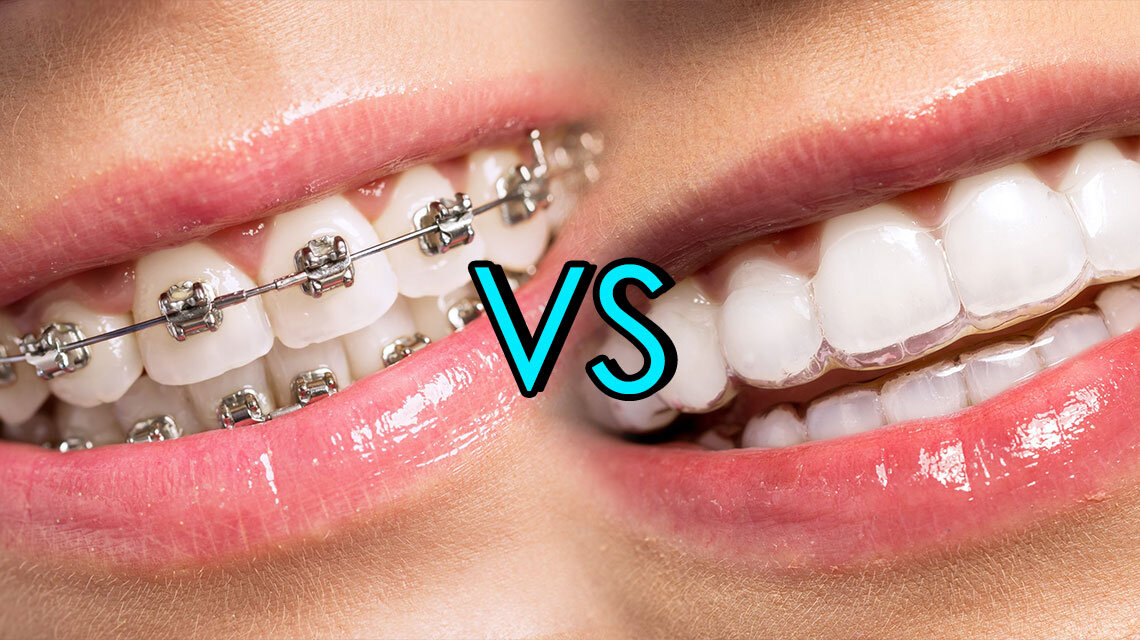Leading Factors to Pick Invisalign Over Other Orthodontic Treatments
Leading Factors to Pick Invisalign Over Other Orthodontic Treatments
Blog Article
Invisalign vs. Typical Dental braces: Which Option Is Right for You?
When thinking about orthodontic treatment, the option between Invisalign and traditional dental braces presents a number of vital factors that warrant careful assessment. Invisalign provides a very discreet choice with detachable aligners, while standard braces supply a more visible yet reliable option for serious misalignment. Each option incorporates unique advantages and drawbacks connected to aesthetic appeals, comfort, treatment duration, and price. Comprehending these subtleties is critical for making an educated decision that straightens with your personal choices and way of living. The inquiry remains: which alternative will best meet your orthodontic demands and assumptions?
Overview of Therapy Alternatives

In contrast, traditional dental braces are composed of steel brackets and cords that are adhered to the teeth. This technique uses continuous pressure over time to achieve placement. While effective for complex orthodontic problems, traditional dental braces require routine visits for modifications and can present difficulties in keeping dental hygiene because of the difficulty of cleansing about cables and brackets.
Both choices have their advantages, and the choice commonly depends upon details oral problems, way of living preferences, and person compliance. Ultimately, getting in touch with an orthodontic specialist is critical for figuring out one of the most suitable therapy strategy tailored to specific needs. Comprehending the subtleties of each alternative can substantially affect the overall success of orthodontic therapy.
Visual Considerations
A considerable factor affecting the option between Invisalign and typical braces is the visual allure each therapy supplies. Invisalign aligners are crafted from clear plastic, making them essentially unnoticeable when worn.
In comparison, typical braces include metal braces and wires, which can be much more visible. While innovations in orthodontic modern technology have caused the growth of smaller sized braces and tinted elastics, typical dental braces still maintain a more obvious account. For some people, the exposure of dental braces may hinder them from looking for essential treatment.
Eventually, the option in between Invisalign and standard braces may rest on individual preferences relating to appearances. Clients that prioritize discernment frequently favor Invisalign, while those who are less worried regarding visibility may decide for standard braces. Comprehending the visual ramifications of each alternative is important for making an informed decision that lines up with one's way of living and choices.
Comfort and Convenience

In terms of benefit, Invisalign aligners are detachable, making it possible for people to appreciate their preferred foods without limitation and maintain optimum dental hygiene. Brushing and flossing are streamlined, as the aligners can be secured during these regimens, whereas typical braces require cautious navigating around brackets and cords.
In contrast, standard braces require normal modifications, making them less hassle-free for those with hectic timetables. In general, the convenience and convenience of Invisalign make it an attractive selection for numerous individuals looking for orthodontic therapy.
Treatment Period and Performance
While both Invisalign and conventional dental braces work in dealing with dental try here imbalances, the period of treatment can differ considerably between both options. Commonly, Invisalign treatment can take anywhere from 12 to 18 months, depending upon the intricacy of the instance. The clear aligners function by gradually shifting teeth into their desired placements, and normal follow-ups with an orthodontist help guarantee development stays on course.
On the other hand, traditional dental braces frequently need a longer commitment, normally varying from 18 months to 3 years. This results from their set nature and using brackets and wires, which can be extra reliable for serious misalignments and complicated situations (Invisalign). The treatment efficiency of conventional braces is well-documented, as they allow for accurate adjustments and greater control over tooth movement
Ultimately, the selection in between Invisalign and conventional braces may hinge on both the anticipated therapy period and the certain dental issues available. Consulting with an orthodontist is crucial, as they can provide customized referrals based upon individual needs, guaranteeing the chosen technique lines up with desired timeframes and outcomes.
Price Contrast and Insurance Coverage Alternatives
Price plays a considerable role in the decision-making procedure for people considering orthodontic therapy, whether selecting Invisalign or typical dental braces. Usually, the cost of Invisalign arrays from $3,000 to $8,000, while standard braces commonly set you back between $2,000 and $6,000. Elements influencing these expenses include the intricacy of the case, the period of treatment, and geographical area.
Numerous oral insurance coverage strategies offer partial protection for orthodontic therapies, but the specifics can vary commonly. Usually, conventional braces may be a lot more regularly covered by insurance plans contrasted to Invisalign, which web some insurance firms categorize as a cosmetic procedure.
In addition, numerous orthodontic practices provide versatile layaway plan, making both treatment options a lot more accessible. Clients ought to inquire regarding prospective funding choices and discount rates for in advance settlements. Examining the overall expense, consisting of insurance benefits and payment plans, is necessary for making check this an educated choice that straightens with both visual choices and budget considerations.

Conclusion
In summary, the choice between Invisalign and conventional dental braces rests on several variables, consisting of visual preferences, comfort, therapy period, and expense. Invisalign uses a discreet, removable option that facilitates oral health and nutritional adaptability, while typical dental braces may be better for complex dental concerns and usually come with a reduced cost point. Ultimately, consultation with an orthodontist is essential to assess specific scenarios and identify the most ideal therapy alternative for accomplishing ideal oral alignment.
When considering orthodontic treatment, the selection between Invisalign and traditional dental braces provides several vital aspects that warrant mindful examination.Comparing Invisalign and typical braces discloses unique treatment choices for orthodontic adjustment.While both Invisalign and traditional dental braces are efficient in dealing with dental imbalances, the duration of therapy can vary significantly in between the two alternatives.Cost plays a substantial role in the decision-making procedure for individuals thinking about orthodontic treatment, whether choosing for Invisalign or typical braces.In recap, the option in between Invisalign and traditional dental braces pivots on multiple variables, including visual preferences, convenience, treatment duration, and cost.
Report this page